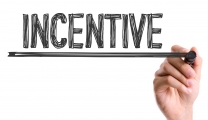A recommended incentive structure (with examples)
Based on what we’ve discussed in this article so far, here’s a detailed incentive plan (with examples) to help you devise a structure for your team more easily and accurately.
1. Financial incentives
- Base salary: Offer a competitive base salary, such as $50,000 per year, to attract high-quality recruiters and provide a stable income. Adjust this number according to your local market and industry benchmarks.
- Commission: Implement a tiered commission system. For example, pay a 15% commission for entry-level placements, 20% for mid-level placements, and 25% for executive placements.
You could also introduce a sliding scale based on the number of placements per quarter, such as 10% for 1-5 placements, 15% for 6-10 placements, and 20% for 11+ placements. Incentivize new client acquisition with a 5% commission for new business brought in.
- Performance bonuses: Set achievable targets for KPIs like time to fill positions, quality of hire, offer acceptance rate, and retention rate of placed candidates.
Reward recruiters who surpass these targets with bonuses, such as a $1,000 bonus for filling a position within 30 days or a $500 bonus for achieving a 90% offer acceptance rate.
2. Non-financial incentives
- Professional development: Allocate an annual budget, such as $2,000 per recruiter, for attending industry conferences, workshops, or enrolling in online courses.
- Recognition and awards: Establish a monthly “Recruiter of the Month” award, featuring the winner in a company newsletter and providing a small gift, like a $100 gift card.
3. Flexible work arrangements
Allow your recruiters to work remotely up to three days per week or offer flextime, enabling them to choose their work hours within a predefined range.

You can also offer your team additional paid time off (PTO). For example, reward top performers with an extra paid day off for each placement above a predetermined threshold, like 15 placements per quarter.
4. Customization for different roles
Tailor your incentive program to suit various roles. For sourcing specialists, offer a $250 bonus for each qualified candidate that receives an offer from a client. For account managers, provide a 3% commission on the total revenue generated from their managed client accounts.
This comprehensive incentive structure balances financial rewards and non-financial incentives while targeting key performance indicators. Implementing this plan will motivate your recruitment team, improve performance, and contribute to your agency’s success.
Continuously review and adjust your program to ensure it remains competitive and effective in the ever-changing talent acquisition landscape.
Key considerations for crafting an incentive structure for your agency
When creating an incentive structure for your recruiters, it’s crucial to account for factors that will impact its effectiveness and fairness.
Below is a list of essential factors to keep in mind to help you design a successful incentive program that encourages collaboration and boosts performance:
1. Factors impacting incentive structures
Your incentive structure should be tailored to your agency’s unique circumstances, taking into account country-specific differences, agency size, job recruitment levels, and salary norms and levels.
2. Incentivizing the whole team
It’s essential to align the goals of business development and research teams with recruiters. For instance, offer business development team members a percentage of revenue (e.g., 5%) from clients they bring in for a set period (e.g., one year). If a recruiter is assisted by a research assistant, you can split the recruiter’s incentive with them (e.g., 2-3% from the recruiter’s 10%).
3. Avoiding common incentive mistakes
Avoid making incentives a zero-sum game, where someone loses when another wins. Ranking and rating schemes can create unhealthy competition and discourage collaboration. Focus on absolute numbers rather than relative measurements when designing your incentive program.
Additionally, it’s best not to impose minimum performance requirements for incentives. A low base makes the incentive meaningless, while a high base may discourage effort. Instead, incentivize every dollar earned to keep motivation high throughout your recruitment agency.

4. Addressing low performance
In case a recruiter underperforms, promptly assess and address the situation. A well-designed incentive program minimizes the risk of maintaining a non-performing recruiter on your team.
5. Adapting incentives for leadership positions
As your team expands and includes team leaders or branch heads, consider introducing profit-based incentives. This approach is suitable for leaders with profit and loss responsibilities, as it ties their incentives to the overall profitability of their team or branch.
Frequently asked questions (FAQs)
1. What is the typical bonus structure for recruiters?
The typical bonus structure for recruiters is a performance-based system where they receive a percentage of the revenue they generate.
This percentage can vary depending on the agency and the recruiter’s base salary, but it often ranges from 10% to 25% of the revenue earned from successful placements.
2. How do you incentivize recruiters?
To incentivize recruiters, you can implement a commission-based structure, where they earn a percentage of the revenue generated from successful placements.
Additionally, you can introduce accelerators for achieving specific targets, offer non-monetary rewards, and provide opportunities for career growth and professional development.
3. How do you create an incentive structure?
To create an incentive structure, first, define the desired outcomes, such as revenue targets, client satisfaction, or employee retention. Then, decide on the type of incentives you want to use, like monetary rewards, non-monetary rewards, or a combination of both.
Ensure that the structure is simple, transparent, and easy to understand. Finally, monitor and evaluate the incentive program’s effectiveness regularly, making adjustments as needed.
4. Do recruiters get an incentive?
Yes, recruiters typically receive incentives as a part of their compensation package.
Incentives are designed to motivate recruiters to perform better and align their goals with the overall objectives of the recruitment agency. These incentives may include commission-based rewards, bonuses, and non-monetary perks.












Replies to This Discussion